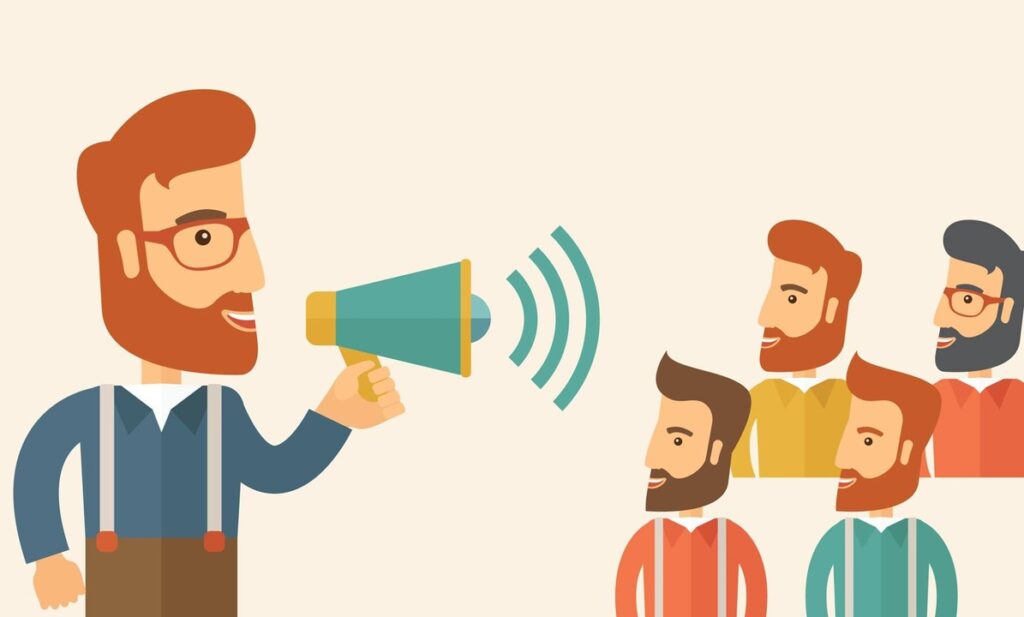
Whether what we write, broadcast, or otherwise put out there changes the attitude and subsequent actions of someone, anyone, depends more upon them than us.
Doesn’t the best writing come out of a kind of frustration? The angsty sense that people have it wrong (whatever ‘it’ might be at the moment) or that something is missing, which the writer should supply. That motivation sparked the first part of this trilogy: pundits on the ‘blue’ side of the country gallingly certain that the main problem with our electoral situation is mainly that a segment the populace had and has the wrong information. I think it is the adherents of this view that have things wrong.
Their insistence is exemplified as noted in Part I by the otherwise insightful Robert Reich. He holds that those of us possessing the right info just need (as Mark Twain used to say) ‘to learn’ those poor unfortunates what’s what and which end is up. Professor Reich has plenty of prestigious company in promoting these ideas. The late Justice David Souter, a profound thinker, said in 2012 that “An ignorant people can never remain a free people. Democracy cannot survive too much ignorance.” That laudable but wishful thinking is also present in a recent from Manvir Singh in the New Yorker noting that “In January, the World Economic Forum released a report showing that fourteen hundred and ninety international experts rated ‘misinformation and disinformation’ the leading global risk of the next two years, surpassing war, migration, and climatic catastrophe.” More than war? Have these people been in a war? Have they even watched a war movie?





My frustration at this stance emerges on many levels but disdain for learning is not one of them. Learning is wonderful, the cause of much success and prosperity — even for me. In 2001 ETS made me their first and only Chief Learning Officer. ETS! (Educational Testing Service to those who were blessed with the unexamined life) Love them or hate them (and you know how that poll will go), ETS had more scientists devoted to the measurement of learning than any other organization in the world. If you were at ETS, you loved learning. Yet becoming expert in an area means also realizing the limits of that area. As noted in the first installment of this trilogy of a rant “The more I learned about learning through endless experiences the more I appreciated its limits in changing how people thought and acted.”
That learning has its limits is ironically evident in the way promoters of 86’ing misinformation have not learned from easily available sources on how and why that won’t work. Information about this reality of the failure of information and education to change people is abundant and keeps popping up. Just one month ago in the Wall Street Journal, Roland Fryer, a prominent conservative academic in his essay The Economics of Polarization outlined how “People tend to interpret ambiguous information as confirming whatever they believed to begin with.” whatever they believed to begin with is also known in the field as their ‘priors’, the existing set of conscious and unconscious expectations and assessments of the world and how it works, keep them on course to believe and act as they always have. We all have them. And we’ve known about their effect upon decision making for a long time. For example, in 2017, Elizabeth Kolbert reviewed an array of research from the mid 20th century on this tendency that might be summed up by her highlighting of a quote from some Stanford scientists: “Once formed impressions are remarkably perseverant.” That’s the summary. But you can go to the link by her name in the previous sentence and read the whole article for yourself. And it’s in The New Yorker, which means it was fact checked rigorously! But I don’t expect it to change your mind. Because most of us tend not to be so much influencers as ‘outfluencers‘. We put stuff out there and its adoption depends upon the existing attitude of the reader, listener, or viewer.
Outfluencers are not one party or antoher. The much vaunted polarization of our society does not apply when it comes to the notion. Both blue and red worlds in the USA agreed during the last presidential election campaign that their salvation would come about through the courting and collaboration of what they hope will be influencers for them. There are two definitions of that term in the Oxford English Dictionary. Both parties were hoping to get the first definition dating from 1968: “A person who has the ability to influence other people’s decisions about the purchase of particular goods or services.” My suspicion is that to varying degrees both GOP and Dems actually got a whole lot more of OED’s second definition added forty years later: “A person who has become well-known through use of the internet and social media, and uses celebrity to endorse, promote, or generate interest in specific products, brands, etc., often for payment.”
Influence is such an interesting word in its origins; it originally had this sense of applying mysterious, magical, or hypnotic power to a person, perhaps astrologically as an emanation from the stars . The Democratic Party now believes that they lost this effort; they need “find the next Joe Rogan.”. Democrats Throw Money at a Problem: Countering G.O.P. Clout Online but the word influence suggests that whatever magical power emanated from these podcast potentates and TikTok Titans actually got ‘in” to the minds and wills of people causing them to act differently than they would have prior to this exposure. These folks seem more to me to be out-fluencers. Their only proven effect is to disseminate their views, spouting a version of reality that like . The effective reception of these messages depends upon the receptivity of individuals and groups.

Did Joe Rogan really convince anyone of his regular listeners to either vote for Donald Trump or not vote for the then Vice President? Have you listened to his show? The other side of that question is could Joe Rogan have persuaded large swaths of his audience to change their predisposition and go to the polls to support Kamala Harris. Separating out the actions of that audience from their pre-existing attitudes, their ingrained ways of looking at the world is difficult. Asking them questions after the fact respondents are unreliable. “Self-reporting bias represents a key problem in the assessment of most observational (such as cross-sectional or comparative, eg, case–control or cohort) research study designs.” In other words, someone saying their vote was influenced by Rogan or Charlamagne Tha God, Alex Cooper, Logan Paul, or Deja Foxx doesn’t mean that it was. (BTW If you don’t know who those people are, don’t feel bad, it means you have a healthy life.) What led them to those sources in the first place? A predisposition, their underlying attitudes.

Media does influence and reinforce attitude, but not through informing or educating. Rather the influence comes from ambience; the provision of a background that always allows your way of seeing the world, of being in your present circumstances, to continue to make sense. These sources again are more ‘outfluencers’; they offer an atmospheric reassurance, an amniotic fluid of factoids. opinions, and distortions. Vinson Cunningham in the New Yorker describes how this works in a grudging appreciation of right wing rag, The New York Post: “The people who insist on making sense speak in small, prim voices, trusting their listeners to understand subtleties of tone. After all, everybody’s off carving out his own personal city, made up of small but real impressions. Why try? The Post screams on, and—by the evidence of our last national election, in which almost every demographic in the city veered right, toward Donald Trump, whose profile was created, in part, in Murdoch’s pages—New York keeps hearing it out.“
To Cunningham and others of our ilk, The Post does seem like a scream. But those already persuaded of danger and corruption and elitism and all the other horrors that the establishment visits upon them it’s more like the background music in a cool coffee shop is for us. Someone else might walk in to that shop and think that the Red Hot Chili Peppers are not conducive to enjoying their ginger green tea, but we are used to it.

That sound tells us where we are so we feel comfortable there. New York Post headlines and other sources of reportage and opinions — dishonest or not — serve the same purpose. Does anyone really listen to Fox News? More likely, they swim part of a school of fish in the waters of sounds and pixels refreshed and stimulated by each wave of smug assurance and arched outrage. No need exists anymore to assemble new data about the world into information to update an outlook; all in this realm already share a tacit knowledge, a received wisdom. Oh, and this procedure is true for readers of the New York Times, New Yorker, and Atlantic as well as listeners to NPR and MSNBC although the waters rise choppier and the beach is often gated. Our attitudes reside in us, part of the complex system that is our existence, and all systems resist change, but complex systems resist change in complex ways.
Attitudes need not be permanent, but their very existence in most of us requires some obduracy. We don’t wish to see ourselves as erratic and irregular; even the kinkiest pride themselves on the certainty of that kinkiness.
This argument is not that attitudes can’t change; they do and have remarkably in my own lifetime. Rutger Bregman recently wrote that “If you go back a couple of decades, students had a very different attitude. There’s this study called the American Freshman Survey, it’s been done since the late 1960s. At that time, when students were asked about their most important life goals, about 80 to 90 percent said that developing a meaningful philosophy of life was most important. Today that’s 50 percent. In the ’60s, 50 percent said making as much money as possible was a really important goal. Today, that’s 80 to 90 percent. The numbers have reversed. For me, that shows that this is not human nature. It is culture. It can change.“
If the outfluencers were more reflections of cultural shifts than catalysts for change, how does attitude alter? If not through education, what are some other possibilities? That’s the subject of Part III of Attitudes and Beatitudes next week.